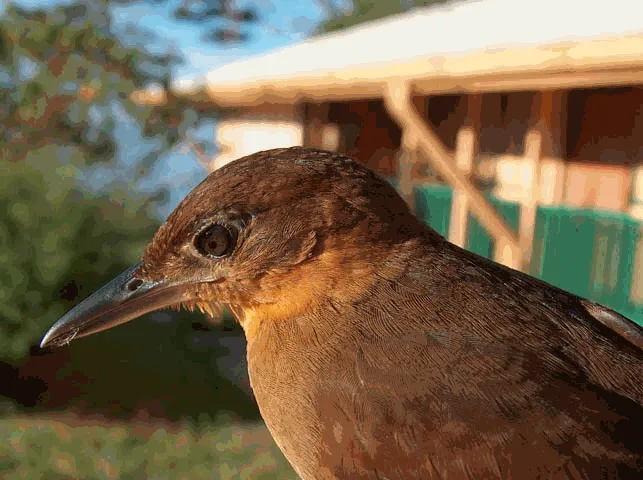
Ruddy Foliage-gleaner
[order] Passeriformes | [family] Furnariidae | [latin] Automolus rubiginosus | [UK] Ruddy Foliage-Gleaner | [FR] Anabate rubigineux | [DE] Zimtkehl-Baumspaher | [ES] Ticotico Castano | [IT] Spigolafoglie rossastro | [NL] Rosse Bladspeurder
Subspecies
| Genus | Species | subspecies | Breeding Range | Breeding Range 2 | Non Breeding Range |
| Automolus | rubiginosus | LA | s Mexico to n Bolivia, ne Amazonia | ||
| Automolus | rubiginosus | brunnescens | |||
| Automolus | rubiginosus | caquetae | |||
| Automolus | rubiginosus | cinnamomeigula | |||
| Automolus | rubiginosus | fumosus | |||
| Automolus | rubiginosus | guerrerensis | |||
| Automolus | rubiginosus | moderatus | |||
| Automolus | rubiginosus | nigricauda | |||
| Automolus | rubiginosus | obscurus | |||
| Automolus | rubiginosus | rubiginosus | |||
| Automolus | rubiginosus | sasaimae | |||
| Automolus | rubiginosus | saturatus | |||
| Automolus | rubiginosus | venezuelanus | |||
| Automolus | rubiginosus | veraepacis | |||
| Automolus | rubiginosus | watkinsi |
Physical charateristics
Upperparts dak reddish brown. Tail dark maroon and throat and upperbreast reddish maroon. Lores buffy white and ear coverts olive. Underparts olive-brown, becoming yellowish in the center. Sexes are alike.
Listen to the sound of Ruddy Foliage-Gleaner
[audio:http://www.aviflevoland.nl/sounddb/R/Ruddy Foliage-Gleaner.mp3]
Copyright remark: Most sounds derived from xeno-canto
| wingspan min.: | 0 | cm | wingspan max.: | 0 | cm |
| size min.: | 18 | cm | size max.: | 19 | cm |
| incubation min.: | 0 | days | incubation max.: | 0 | days |
| fledging min.: | 0 | days | fledging max.: | 0 | days |
| broods: | 1 | eggs min.: | 1 | ||
| eggs max.: | 3 |
Range
Found in a large, but interrupted range in Bolivia, Brazil, Colombia, Costa Rica, Ecuador, El Salvador, Guatemala, Honduras, Mexico, Nicaragua, Panama, Peru, Venezuela and the Guianas. In Suriname widespread but only locally common in the interior.
Habitat
Mainly montane tropical forest in the Andes and Central America. In the Guianas lowland forest. Prefers dense vegetation of ravine bottoms.
Reproduction
Nest is a shallow cup of plant fibre, placed in a chamber at the end of a tunnel (50-200 cm) excavated in a dirt bank. Clutch 2 eggs. No further data.
Feeding habits
Hunts for insects and small vertebrates in dense undergrowth. Forages in pairs or in mixed flocks by gleaning prey from mostly dead leafs. Sometimes tosses leafs on the ground.
Conservation
This species has a large range, with an estimated global extent of occurrence of 2,200,000 km2. The global population size has not been quantified, but the species is not believed to approach the thresholds for the population size criterion of the IUCN Red List (i.e., less than 10,000 mature individuals in conjunction with appropriate decline rates and subpopulation qualifiers), even though the species is described as ‘uncommon’ in at least parts of its range (Stotz et al. 1996). Global population trends have not been quantified, but the species is not believed to approach the thresholds for the population decline criterion of the IUCN Red List (i.e., declining more than 30% in ten years or three generations). For these reasons, the species is evaluated as Least Concern.

Migration
Sedentary throughout range.
Distribution map

]]>
